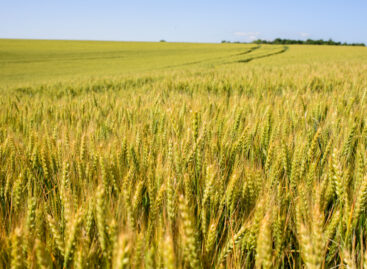With intensive cultivation technology, the market for domestic walnuts can rise again
There is a demand for domestic walnuts, but for successful cultivation, a change of attitude is needed on domestic plantations – it was said at the walnut trade day organized by the National Chamber of Agriculture, the Hungarian Vegetable and Fruit Association (FruitVeB) and Szatmári Diókert Kft.

(Photo: Pixabay)
Although in the last 10 years, thanks to support schemes, the area of domestic walnut plantations has increased significantly – instead of the previous 6,000, walnuts are grown in an area of more than 9,200 hectares in the country – but the yield has not increased. Moreover, the yield averages in many cases do not even reach 1-1.5 tons per hectare, in contrast to our competitors, where an average of 4-5 tons per hectare is not unusual. According to what was said at the walnut trade day organized by the National Chamber of Agriculture, the Hungarian Vegetable and Fruit Association (FruitVeB), and Szatmári Dióker Kft., the reason for this is that there are still many neglected, low-quality walnut plantations in terms of cultivation technology, well-cultivated , the size of prosperous plantations in the country is below 3,000 hectares. However, in the latter – where walnuts are grown under intensive conditions – the average of 3 tons is also available.
In order to improve the competitiveness of domestic walnut production, significant improvements are needed in the sector
In addition to the use of varieties adapted to the specific growing area, great emphasis must be placed on spring protection – fungal and bacterial diseases and various pests cause serious problems in walnut plantations. For the sake of effective plant protection, it is important to develop a more manageable crown shape and regular pruning, which also makes the renewal of the fruiting parts continuous.
While the Hungarian walnut market was on a steep upward trajectory between 2006 and 2019, demand unfortunately stalled thereafter
With an annual crop of 6,450 tons, our country ranks 30th in the ranking of nut-producing countries, and is among the relatively small producers. China, which used to be a net importer of walnuts in the world, has come to the fore, and today around 1.4 million tons of crops are harvested in the Far Eastern country. On the global nut market, there is a prospect of a harvest similar to last year’s this year as well, although the drought may result in a 10-15 percent yield reduction in the Australian and Californian plantations.
The export of domestic nuts in the form of shelled nuts and nut guts also shows a continuous decrease
The shelled nut market has changed in the recent period, consumers are looking for smaller and cheaper nuts, which can be attributed to the expansion of supermarkets. Stores cannot pack large nuts – over 34 mm – in small packages. However, the Hungarian varieties are typically larger in size, the 36-40 mm size is not uncommon, which supermarket chains can offer mainly in juice form, and in wholesale markets it can be sold in 5-10 kg packages. The actors of the sector agreed that it is essential to increase yield averages and improve efficiency It is important that instead of so-called extensive plantations, the sector increasingly switches to intensive cultivation technology. The new cultivation system includes micro-sprinkler and/or drip water-saving irrigation, regular pruning, mechanization of harvesting, as well as targeted plant protection and nutrient management. As a type of fruit, walnuts are difficult to adapt in terms of varieties. All major nut-growing countries have varieties that are best adapted to local conditions. It is the same in our country. imported varieties and novelties can only be brought into cultivation after a thorough preliminary inspection. However, we don’t need to be ashamed, because we have excellent, internationally recognized nut varieties that also grow on side buds, which were selected from the domestic nut population and then further bred. However, during the presentations, the knowledge that domestically bred varieties also perform differently in our different production areas was confirmed. This should always be taken into account when choosing a breed.
The sources of the KAP Strategic Plan can also help farmers in implementing the developments
Farmers can apply for the soon-to-be-opened invitation to plant horticultural plantations from September 10 – in the first round – while the new Agricultural-Environmental Management (AKG) scheme will start from January 1, 2025. The National Chamber of Agrarian Economy considers it a priority task to provide its members engaged in fruit growing with practice-oriented information appropriate to the current topic and situation. As part of this, NAK organized professional days with different themes this year as well. The Walnut professional day held in the Szatmár growing area on Nagyar was the third in a row, in July a peach technology presentation was held in Tordas, and a plum variety presentation and professional day were held in Cegléd.
NAK
Related news
According to the Seed Association, the proportion of metal-sealed eared seeds should be increased for the sake of varietal purity and crop safety
Due to the difficulties in growing corn, winter wheat, grown…
Read more >István Nagy: Hungarian melon season starts with good quality melons
Compared to last year, the volume of melon imports has…
Read more >The government provides irrigation water to farmers for free
The government provides irrigation water to farmers for free by…
Read more >Related news
GKI analysis: Why do Hungarian households live more poorly than anyone else in the EU?
Imagine that the residents of every EU country shop in…
Read more >KSH: industrial producer prices decreased by 0.7 percent in May 2025 compared to the previous month, and increased by an average of 6.9 percent compared to a year earlier
In May 2025, industrial producer prices were 6.9 percent higher…
Read more >Consumption drives the economy
According to the latest forecast by the Balance Institute, the…
Read more >






